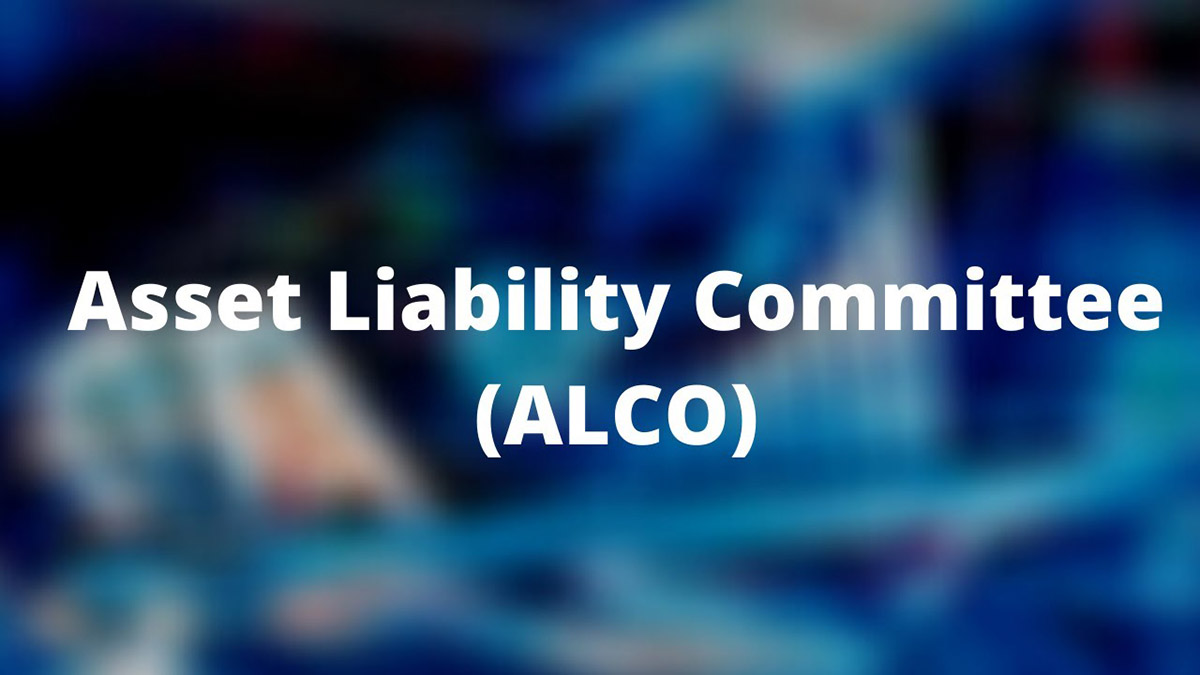

Finance
What Does TRIA Stand For In Insurance
Published: November 24, 2023
Learn what TRIA stands for in insurance and how it impacts the world of finance. Enhance your understanding of this key acronym for financial protection.
(Many of the links in this article redirect to a specific reviewed product. Your purchase of these products through affiliate links helps to generate commission for LiveWell, at no extra cost. Learn more)
Table of Contents
Introduction
TRIA, which stands for Terrorism Risk Insurance Act, is a federal law introduced in the wake of the September 11, 2001 terrorist attacks in the United States. The purpose of TRIA is to provide a federal backstop for insurance coverage against acts of terrorism, ensuring that businesses and individuals can obtain affordable insurance protection against potential losses resulting from acts of terrorism.
In the aftermath of the 9/11 attacks, insurance companies faced significant challenges in providing coverage for acts of terrorism. The scale and magnitude of the losses incurred made it increasingly difficult for insurers to accurately assess and manage the risk associated with terrorist events. As a result, many insurers either significantly increased premiums for terrorism coverage or ceased offering such coverage altogether, leaving businesses and individuals exposed to significant financial risks.
To address this issue, TRIA was enacted by Congress and signed into law by President George W. Bush in 2002. The intent of TRIA was to create a temporary federal program that would incentivize insurers to continue offering terrorism insurance coverage by sharing the risk of loss due to acts of terrorism between the federal government and the insurance industry.
Since its inception, TRIA has played a crucial role in stabilizing the insurance market and providing much-needed certainty and affordability in terrorism insurance coverage. The program has been extended multiple times, with the most recent extension occurring in 2019, ensuring the continued availability of terrorism risk insurance for businesses and individuals across the United States.
In this article, we will delve deeper into the key elements of TRIA, how it works, and its impact on the insurance industry and insurance premiums. We will also discuss the role of insurance companies in facilitating TRIA coverage, as well as the potential future implications of this vital federal program.
What is TRIA?
TRIA, short for the Terrorism Risk Insurance Act, is a federal law designed to provide a backstop for insurance coverage against acts of terrorism in the United States. It was first introduced in 2002 as a response to the challenges faced by insurance companies in providing affordable and accessible terrorism insurance coverage.
Under TRIA, the federal government partners with the insurance industry to share the risk of losses resulting from acts of terrorism. This partnership aims to ensure that businesses and individuals can obtain coverage for potential losses in the event of a terrorist attack.
TRIA operates as a government reinsurance program, meaning that it provides a financial guarantee to insurance companies, allowing them to offer terrorism coverage to policyholders. In return, insurance companies pay premiums to participate in the program.
The primary objective of TRIA is to enhance the availability and affordability of terrorism insurance coverage. By providing a federal backstop, TRIA encourages insurance companies to continue offering this type of coverage, even in the face of potential catastrophic losses from terrorist acts.
It’s important to note that TRIA does not provide insurance coverage directly to policyholders. Instead, it acts as a support mechanism that enables insurers to offer terrorism coverage by assuming a portion of the risk associated with acts of terrorism.
The program covers a wide range of potential terrorist events, including acts by both domestic and foreign terrorists. It encompasses acts of terrorism on US soil, as well as certain international acts that meet specific criteria outlined in the legislation.
TRIA has played a vital role in ensuring the stability and availability of terrorism insurance coverage in the US. By providing a federal safety net, it gives confidence to insurers, businesses, and individuals alike, allowing them to manage the risks associated with acts of terrorism more effectively.
The Purpose of TRIA
The primary purpose of TRIA, the Terrorism Risk Insurance Act, is to provide a stable and accessible insurance market for businesses and individuals seeking coverage against acts of terrorism. This federal program was established to address the challenges faced by the insurance industry after the September 11, 2001 terrorist attacks in the United States.
One of the key purposes of TRIA is to ensure the availability of terrorism insurance coverage. Following the 9/11 attacks, many insurance companies either significantly increased premiums or stopped offering terrorism coverage altogether, due to the difficulty in assessing and managing the risk associated with acts of terrorism. This left businesses and individuals vulnerable to significant financial losses in the event of a terrorist attack.
TRIA provides a federal backstop that encourages insurance companies to offer terrorism insurance by sharing the risk of losses with the government. This helps to stabilize the insurance market and ensures that businesses and individuals can access affordable coverage against acts of terrorism.
Another important purpose of TRIA is to protect the US economy and promote economic stability. Acts of terrorism can have severe financial consequences, leading to business interruptions, property damage, and loss of life. Without adequate insurance coverage, these impacts can have far-reaching effects on the economy, inhibiting investment, job growth, and overall economic growth.
By providing a federal support mechanism, TRIA helps safeguard the economy by minimizing the potential for financial instability caused by acts of terrorism. The availability of affordable insurance coverage allows businesses to mitigate their risks and continue their operations with confidence, even in the face of potential terrorist threats.
Additionally, TRIA plays a crucial role in ensuring that policyholders are protected and compensated in the event of a terrorist attack. The program establishes a framework for the payment of claims and provides a mechanism for recovering losses sustained as a result of an act of terrorism. This helps to alleviate the financial burden on policyholders and ensure that they can recover and rebuild in the aftermath of such an event.
In summary, the purpose of TRIA is two-fold: to ensure the availability and affordability of terrorism insurance coverage, and to protect the US economy by minimizing the financial impact of acts of terrorism. By providing a federal backstop, TRIA provides stability and confidence in the insurance market, enabling businesses and individuals to proactively manage their risks and mitigate the potential impacts of terrorism.
How Does TRIA Work?
TRIA, the Terrorism Risk Insurance Act, operates as a partnership between the federal government and the insurance industry to facilitate the availability and affordability of terrorism insurance coverage. The program works by creating a framework that encourages insurers to provide coverage for acts of terrorism.
Under TRIA, insurance companies are required to offer terrorism coverage to policyholders for properties and businesses located in the United States. This coverage extends to acts of terrorism that meet specific criteria outlined in the legislation.
In return for offering terrorism insurance, insurance companies benefit from a federal backstop. Under this arrangement, the government provides financial support to insurers in the event of a certified act of terrorism that triggers the program. This support helps to mitigate the potential losses incurred by insurance companies, making it more feasible for them to offer terrorism coverage.
For an act to be eligible for coverage under TRIA, it must meet certain criteria. The act must be deemed an act of terrorism, certified by the Secretary of the Treasury, the Secretary of State, and the Attorney General. The act must also cause either significant property and casualty losses, or result in at least $5 million in insured losses collectively across all insurers participating in the TRIA program.
In the event of a certified act of terrorism, the insurance company’s liability for covered losses is shared with the federal government. There is a predetermined deductible that insurers must satisfy before the government’s share of the losses kicks in. The federal government’s portion of the losses is funded through the Terrorism Risk Insurance Fund, which is replenished through recouping payments from participating insurers.
It’s important to note that TRIA does not dictate pricing for terrorism insurance coverage. Insurance companies have the flexibility to set their own premiums based on their assessment of the risk and the market conditions. However, TRIA does provide guidelines to ensure the reasonableness of premiums charged by insurers for terrorism coverage.
TRIA operates on a temporary basis and requires periodic reauthorization by Congress. The program has been extended several times since its initial enactment, with the most recent extension occurring in 2019. Each extension ensures the continuity of the federal backstop for terrorism insurance coverage, giving insurers and policyholders confidence in the availability of affordable coverage.
In summary, TRIA works by establishing a partnership between the federal government and insurance companies to encourage the availability and affordability of terrorism insurance coverage. The program provides a federal backstop for insurers, ensuring that losses resulting from acts of terrorism are shared, and helping to stabilize the insurance market in the face of potential catastrophic events.
Key Elements of TRIA
The Terrorism Risk Insurance Act (TRIA) contains several key elements that define its operation and impact on the insurance industry. These key elements help to provide stability, certainty, and accessibility in terrorism insurance coverage. Let’s explore the main components of TRIA:
- Definition of Terrorism: TRIA includes a specific definition of terrorism that must be met for an act to be eligible for coverage. The act must be deemed an act of terrorism, certified by the Secretary of the Treasury, the Secretary of State, and the Attorney General.
- Federal Certification Process: Before TRIA coverage can be triggered, there is a certification process that determines whether an act meets the criteria for terrorism coverage. The certification is conducted by the aforementioned government officials based on the nature and intentions of the act.
- Triggering Event: For TRIA coverage to come into effect, the act of terrorism must cause aggregate insured losses exceeding a certain threshold. The threshold is determined annually and serves as a trigger point for the federal backstop to kick in.
- Participation by Insurance Companies: TRIA operates through the voluntary participation of insurance companies. To offer terrorism insurance coverage, insurers are required to meet specific program requirements and pay premiums to participate in the federal backstop.
- Federal Assistance: In the event of a triggered act of terrorism, insurance companies are responsible for a portion of the losses up to a predetermined deductible. Beyond the deductible, the federal government steps in to share the remaining losses through financial assistance.
- Sharing of Losses: TRIA establishes a sharing mechanism between participating insurance companies and the federal government for covered losses. The federal government’s share is funded through recouping payments from insurers, ensuring that the financial burden is distributed between the public and private sectors.
- Insurer Deductibles and Coinsurance: Insurance companies have deductible obligations for terrorism losses, which serve as a form of self-insurance. Additionally, TRIA allows for coinsurance, meaning that the participating insurers must bear a specified percentage of the losses beyond the deductible.
- Policyholder Protections: TRIA includes provisions to safeguard policyholders in the event of a certified act of terrorism. It establishes a framework for the payment of claims and ensures that policyholders are adequately compensated for covered losses.
These key elements work together to create a comprehensive framework for terrorism insurance coverage under TRIA. By defining the parameters for certified acts of terrorism, establishing a sharing mechanism for losses, and providing financial support to insurance companies, TRIA ensures the availability, affordability, and stability of terrorism insurance coverage in the United States.
Coverage Provided by TRIA
TRIA, the Terrorism Risk Insurance Act, provides coverage for acts of terrorism that meet specific criteria outlined in the legislation. This coverage is aimed at ensuring that businesses and individuals can obtain insurance protection against potential losses resulting from acts of terrorism.
TRIA covers a broad range of potential terrorist events, including both domestic and foreign acts of terrorism. The program includes acts that qualify as terrorism, as certified by the Secretary of the Treasury, the Secretary of State, and the Attorney General.
The coverage provided by TRIA applies to acts of terrorism that cause significant property and casualty losses or result in at least $5 million in insured losses across all participating insurers collectively. These losses must be a direct result of an act that meets the definition of terrorism under TRIA.
Under TRIA, covered losses can include physical damage to property, bodily injury, and other losses arising from acts of terrorism. This coverage extends to both commercial and residential properties, including buildings, contents, and business interruption losses.
Additionally, TRIA offers coverage for certain acts of terrorism that occur outside the United States. In order for an international act to be covered, it must be certified by the Secretary of the Treasury and meet specific criteria related to the nature and intent of the act, as outlined in the legislation.
It’s important to note that TRIA does not cover losses resulting from acts of war, nuclear, biological, chemical, or radiological (NBCR) events. These types of events are typically excluded from standard insurance policies and are not within the scope of TRIA coverage.
The coverage provided by TRIA is meant to provide a certain level of financial protection in the event of a certified act of terrorism. It enables policyholders to recover losses and rebuild following a terrorist attack, minimizing the economic impact on businesses, individuals, and the overall economy.
While TRIA ensures the availability of coverage for acts of terrorism, it does not dictate pricing or policy terms. Insurance companies have the flexibility to set their own premiums based on risk assessments and market conditions. Policyholders should work with their insurers to understand the specific coverage and terms provided under TRIA.
In summary, TRIA provides coverage for acts of terrorism that meet the certification criteria outlined in the legislation. This coverage encompasses a wide range of potential losses and aims to protect policyholders from financial devastation in the face of a terrorist attack.
The Role of Insurance Companies in TRIA
Insurance companies play a crucial role in the implementation and operation of TRIA, the Terrorism Risk Insurance Act. As participants in the TRIA program, insurers help facilitate the availability and affordability of terrorism insurance coverage for businesses and individuals across the United States.
One of the primary roles of insurance companies in TRIA is to offer terrorism insurance coverage to policyholders. TRIA requires participating insurers to make terrorism coverage available to commercial policyholders for properties and businesses located within the United States.
Insurance companies also bear a portion of the risk associated with acts of terrorism through deductibles and coinsurance. Before the federal government’s financial assistance kicks in, participating insurers are responsible for paying a predetermined deductible for covered losses resulting from acts of terrorism. Beyond the deductible, insurers may be required to contribute a certain percentage of the losses through coinsurance.
Additionally, insurance companies are responsible for participating in the TRIA program by paying premiums to the federal government. These premiums help fund the Terrorism Risk Insurance Fund, which is used to provide financial support to insurers in the event of a certified act of terrorism.
Insurance companies also have a role in assessing and managing the risks associated with terrorism. Through their expertise in underwriting and risk evaluation, insurers evaluate the potential exposures and set premiums for terrorism coverage based on their assessment of the risk. This ensures that the pricing of terrorism insurance coverage remains reasonable and reflects the risk associated with acts of terrorism.
Furthermore, insurance companies have a responsibility to educate policyholders about terrorism insurance and its importance. They help businesses and individuals understand the coverage provided under TRIA and assist in determining the appropriate level of coverage needed to protect against potential losses resulting from acts of terrorism.
Insurance companies also work closely with the federal government in the event of a certified act of terrorism. They are responsible for processing and handling claims related to acts of terrorism, ensuring that policyholders are appropriately compensated for their covered losses. Insurers work in coordination with the federal government to streamline the claims process and ensure a prompt and fair resolution for policyholders.
Overall, the role of insurance companies in TRIA is integral to the successful implementation and operation of the program. Their participation and collaboration with the federal government help facilitate the availability and affordability of terrorism insurance, enabling businesses and individuals to protect themselves against the financial impact of acts of terrorism.
TRIA’s Effect on Insurance Premiums
TRIA, the Terrorism Risk Insurance Act, has a significant impact on insurance premiums, particularly in the realm of terrorism insurance coverage. The program aims to stabilize the insurance market and make terrorism coverage more accessible and affordable for businesses and individuals.
One of the primary effects of TRIA is its ability to mitigate the uncertainty and volatility associated with insuring against acts of terrorism. Before TRIA was enacted, insurance companies faced challenges in accurately assessing and pricing the risk of terrorism, resulting in higher premiums or the withdrawal of coverage altogether.
With the federal backstop provided by TRIA, insurance companies are more willing to offer terrorism insurance coverage, knowing that they have a financial safety net in the event of a certified act of terrorism. This increased willingness to underwrite terrorism risk contributes to the stabilization of the insurance market.
By sharing the risk of losses with the federal government, insurers can offer terrorism coverage at more affordable premiums. The presence of TRIA helps to keep premiums relatively lower compared to the period before the program was established, as insurers are not solely responsible for shouldering the full risk of catastrophic losses due to acts of terrorism.
However, it’s important to note that the affordability of insurance premiums under TRIA may still vary based on a variety of factors. These factors can include the location of the insured property, its vulnerability to terrorist attacks, the level of coverage sought, and insurance company-specific considerations.
Since TRIA allows insurance companies to set their own premiums, it gives them the flexibility to factor in their risk assessments and market conditions when determining pricing. Insurers consider elements such as the potential for terrorist activity in a specific area, the security measures implemented by the insured property, and the overall exposure to terrorism-related risks.
Additionally, TRIA includes provisions to help ensure the reasonableness of premiums charged by insurers for terrorism coverage. The Secretary of the Treasury, in consultation with the Secretary of State and the Attorney General, periodically reviews the premiums charged by participating insurers and can disapprove unreasonable premium rates accordingly.
In summary, TRIA has a tangible effect on insurance premiums for terrorism coverage. It stabilizes the insurance market by sharing the risk of losses with the federal government and provides a financial safety net for insurers. This allows insurers to offer terrorism insurance at more affordable premiums, although individual rates may still vary based on specific factors and risk assessments made by insurance companies.
Understanding TRIA’s Expiration and Extension
The Terrorism Risk Insurance Act (TRIA), like many federal programs, operates on a temporary basis and periodically requires reauthorization by Congress. The expiration and extension of TRIA are crucial moments that can impact the availability and stability of terrorism insurance coverage.
When TRIA approaches its expiration date, there is uncertainty in the insurance market regarding the future of terrorism insurance coverage. This uncertainty can lead to disruptions in the availability and affordability of such coverage, as insurers may be hesitant to offer policies without the federal backstop provided by TRIA.
Congress has historically extended TRIA to ensure the continued availability and stability of terrorism insurance coverage. These extensions have provided a level of certainty and confidence to insurers, which in turn allows businesses and individuals to manage their risks effectively.
During the extension process, Congress evaluates the effectiveness and necessity of TRIA, considering factors such as the threat of terrorism, the state of the insurance market, and the potential economic implications of not reauthorizing the program.
Extension discussions often involve the consideration of potential modifications to the program. Proposals for changes to TRIA can include adjustments to coverage limits, deductibles, coinsurance requirements, and other elements designed to further enhance the program’s effectiveness and responsiveness to evolving market conditions.
Once an extension is approved, it serves to maintain the continuity of terrorism insurance coverage while providing stability and reassurance to businesses, insurers, and policyholders. This continuity is crucial in ensuring that there are no disruptions in the availability of coverage and that businesses can continue to manage their risks effectively.
It’s important to note that the expiration and extension of TRIA can have broader implications beyond insurance coverage. The program’s expiration could potentially impact the overall economic stability of the nation, as businesses may face challenges in securing financing, attracting investment, and planning for the future in light of increased uncertainty regarding terrorism risk coverage.
Therefore, the extension of TRIA is considered essential to maintaining a stable insurance market, preserving economic security and resilience, and ensuring that businesses and individuals can be adequately protected against potential losses resulting from acts of terrorism.
In summary, the expiration and extension of TRIA are critical moments that impact the availability and stability of terrorism insurance coverage. The extensions provide certainty to insurers, allowing them to continue offering coverage, while also safeguarding the broader economy by mitigating the potential for disruptions and uncertainties related to terrorism risk.
Future Implications of TRIA
The Terrorism Risk Insurance Act (TRIA) has had a significant impact on the availability and affordability of terrorism insurance coverage since its inception. As the program continues to evolve and adapt to changing circumstances, several future implications emerge:
1. Continuity of Coverage: The extension and reauthorization of TRIA are essential to maintaining the continuity of terrorism insurance coverage. The program provides confidence to insurers, policyholders, and lenders, ensuring the availability of affordable coverage in the face of evolving terrorism threats.
2. Economic Stability: TRIA plays a vital role in maintaining economic stability by mitigating the potential financial impact of acts of terrorism. The program helps businesses and individuals effectively manage their risks, promoting investment, job growth, and overall economic resilience in the face of potential terrorist attacks.
3. Evolving Terrorism Risks: As the nature of terrorism threats continues to evolve, TRIA must adapt to address emerging risks. This may include considering coverage for new types of terrorist acts or adapting the certification process to account for changing trends in terrorism. Flexibility in updating the program is vital for it to remain effective and relevant.
4. Insurance Industry Collaboration: The insurance industry’s continued collaboration and participation in TRIA are crucial for its success. Insurers play a vital role in providing coverage, assessing risks, and handling claims. Collaboration with the federal government ensures that terrorism insurance remains accessible, affordable, and comprehensive.
5. Public-Private Partnerships: TRIA highlights the significance of public-private partnerships in managing risks associated with acts of terrorism. The cooperation between the government and insurers not only ensures the availability of coverage but also spreads the risk, enabling the private sector to function effectively in the face of potential catastrophic events.
6. Cyber Terrorism Coverage: With the increasing threat of cyber terrorism, the future of TRIA may involve discussions on whether to expand the scope of coverage to include cyber-related acts of terrorism. As cyber risks become more prominent, considering coverage for losses due to cyber terrorism could become a crucial aspect of the program’s evolution.
7. Global Coordination: The future of TRIA could also involve exploring opportunities for international coordination and cooperation in addressing terrorism risks. Given that acts of terrorism can have global implications, collaborating with other countries and insurers to ensure comprehensive coverage and risk management may become increasingly important.
In summary, the future implications of TRIA revolve around maintaining continuity of coverage, adapting to emerging terrorism risks, fostering collaboration between the public and private sectors, and exploring new areas of coverage such as cyber terrorism. By addressing these implications, TRIA can continue to provide stability, accessibility, and affordability in terrorism insurance coverage while effectively managing risks associated with acts of terrorism.
Conclusion
The Terrorism Risk Insurance Act (TRIA) plays a vital role in the availability, affordability, and stability of terrorism insurance coverage in the United States. Since its enactment, TRIA has provided a federal backstop that encourages insurers to offer coverage against acts of terrorism, ensuring that businesses and individuals can obtain protection against potential losses.
TRIA addresses the challenges faced by the insurance industry in accurately assessing and managing the risks associated with acts of terrorism. By sharing the risk of losses with the federal government, insurers are more willing to offer terrorism insurance coverage, promoting a stable insurance market.
The program’s key elements, including its definition of terrorism, federal certification process, and sharing of losses, create a comprehensive framework for the implementation of terrorism insurance coverage. Insurance companies play a critical role in offering coverage, assessing risks, and handling claims, ensuring that policyholders receive the necessary protection and compensation.
TRIA’s extension and reauthorization are crucial moments that provide certainty and stability to the insurance market. These extensions ensure the continuous availability of terrorism insurance coverage, safeguarding the broader economy and promoting economic stability.
Looking to the future, TRIA must adapt to evolving terrorism risks and consider new areas of coverage, such as cyber terrorism. Collaboration between the public and private sectors, global coordination, and ongoing industry participation will be essential for the continued success and effectiveness of the program.
In summary, TRIA plays a critical role in providing stability, accessibility, and affordability in terrorism insurance coverage. By balancing the risks between insurers and the federal government, the program ensures that businesses and individuals can manage their risks effectively in the face of potential acts of terrorism. With continued support and adaptation, TRIA will remain an essential component of the insurance industry and contribute to the long-term resilience of the United States economy.














